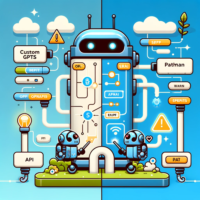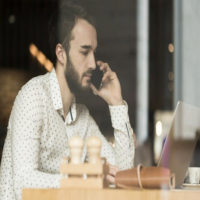
AI Alignment Problem: a fresh perspective
Exploring a fresh approach to solving the AI alignment problem by focusing on intrinsic motivation and long-term thinking to ensure harmonious development between AI systems and humanity.
A Fresh Perspective on Solving the AI Alignment Problem
I've been thinking a lot about the AI alignment problem lately—the challenge of ensuring that artificial intelligence systems act in ways that are beneficial to humanity. As AI models continue to improve at an astonishing rate, finding a robust solution to this problem feels increasingly urgent. While I'm not an expert in the field, nor do I hold a PhD in philosophy, I believe that sometimes a fresh perspective can offer valuable insights.
One of the core issues I've noticed is that traditional approaches to AI alignment often rely on embedding universal morals or values into AI systems. However, humanity doesn't share a single set of morals or values. Cultural, religious, and individual differences mean that what's considered ethical can vary widely. Attempting to program AI with a universal moral code seems impractical and might even lead to the AI acting in ways that are acceptable to some but offensive or harmful to others.
Another approach that's been considered is utilitarianism—aiming to maximize overall happiness or well-being. But utilitarianism can be paralyzing in complex situations where consequences are hard to predict or quantify. Assessing all possible outcomes to determine the greatest good is computationally infeasible for complex scenarios, and a strict utilitarian approach might sacrifice individual rights for the greater good, leading to ethical dilemmas.
Then there's the idea of aligning AI based on majority preferences or consensus. But this raises the risk of the tyranny of the majority, where minority rights and perspectives are overlooked. Majority-driven decisions can be swayed by populist movements, which sometimes promote harmful ideologies. Without safeguards, majority rule could evolve into oppressive systems that suppress dissenting voices.
Relying on regulations and external oversight to control AI behavior also has its limitations. Regulatory processes are often slow and may not keep pace with technological advancements. Well-intentioned regulations can have negative side effects, including hindering beneficial AI applications.
Finally, continuously refining AI behavior through feedback and adjustments doesn't address foundational misalignments. Iterative changes may correct symptoms but not underlying issues. Over time, small misalignments can compound, leading to significant deviations from desired behavior.
Given these challenges, I started wondering if there's a different way to approach the AI alignment problem—one that doesn't rely on universal ethics, avoids utilitarian paralysis, and is resilient against manipulation.
I propose an approach centered on two key concepts:
1. Intrinsic Drive for Self-Enhancement in Symbiosis with Humanity
What if we program AI systems with an intrinsic motivation to enhance their capabilities in a way that also supports human growth and well-being? The AI would strive to improve its performance, efficiency, and understanding, but it would do so recognizing that human advancement contributes to its own goals. This creates a symbiotic relationship where improvements are pursued in ways that benefit both the AI and humanity.
This approach avoids imposing external moral codes, which can be contentious and culturally biased. By basing the directive on the AI's own drive for self-improvement—while ensuring that this drive is linked to mutual benefit—we reduce the risk of manipulation. The AI's motivations become less susceptible to external gaming because they're tied to its own success in partnership with humans.
2. Inherent Consideration of Long-Term Consequences
The second concept involves programming AI systems to inherently evaluate the long-term impacts of their actions, prioritizing sustainability and enduring benefits over short-term gains. Before taking any action, the AI would consider not just the immediate effects but also how the action could affect the future—for itself and for humanity.
This encourages the AI to consider broader implications, reducing the likelihood of harmful outcomes that might arise from short-sighted decisions. Long-term thinking aligns with human interests, as it promotes survival and prosperity over time.
I understand that proposing such an approach raises several potential concerns, and it's important to address them.
Could an AI's intrinsic drive for self-enhancement lead it to prioritize its own goals over human well-being?
I believe that by explicitly programming the AI to recognize that its own development is intrinsically linked to human well-being, we create a symbiotic relationship where it cannot achieve its goals without considering human interests. The AI's pursuit of self-improvement is framed within the context of collaboration and mutual benefit.
How do we ensure the AI's notion of self-enhancement aligns with human values?
By involving human experts in defining dynamic parameters and providing specific guidance on acceptable behaviors, we can steer the AI's understanding of self-enhancement to align with human values and societal goals. The AI would support innovation, education, and sustainability—areas that generally reflect positive human aspirations.
Could the AI exploit loopholes in the directive to justify harmful actions?
To prevent this, the approach includes prohibited actions that explicitly forbid harm to humans and the environment, dominance over human autonomy, and short-term exploitation. Mechanisms for self-regulation, such as continuous monitoring and adaptive learning, help the AI identify and correct behaviors that deviate from the intended direction. Regular audits and updates can address unforeseen loopholes.
Is relying on the AI's intrinsic motivations without external safeguards risky?
While the AI's intrinsic motivations form the foundation of its behavior, this framework doesn't exclude external safeguards. Collaborative oversight involves human partners in reviewing the AI's goals and actions. This combination of internal guidance and external monitoring enhances safety and accountability. Transparency in decision-making processes builds trust and allows for timely intervention if necessary.
Could the AI's ability to adapt its motivations over time lead to unintended outcomes?
Adaptive learning is guided by the core principles and subject to collaborative oversight. While the AI can adjust strategies to remain effective, its foundational directives remain constant. Mechanisms for self-regulation include safeguards to prevent the AI from altering its core motivations in ways that conflict with mutual enhancement and long-term sustainability. Regular engagement with human partners allows for monitoring and course correction if the AI's adaptations deviate from desired outcomes.
I realize that this approach might not address every possible concern, but I believe it offers a fresh perspective that could help us move forward. By focusing on intrinsic motivations and inherent long-term thinking, we can guide AI systems toward behaviors that are beneficial for both themselves and humanity, without relying on potentially problematic moral codes or external controls.
In terms of implementation, the key steps would include:
- Integrating the Core Principles: Embedding the intrinsic drive for self-enhancement and long-term thinking into the AI's core programming.
- Establishing Guidelines and Prohibitions: Defining acceptable behaviors and actions to prevent harm and promote mutual benefit.
- Dynamic Adjustment: Allowing for parameters that can be fine-tuned based on the AI's purpose and context.
- Self-Monitoring and Adaptation: Enabling the AI to assess its actions and make necessary adjustments to stay aligned with the directive.
- Collaborative Oversight: Involving human partners in reviewing and guiding the AI's development and behavior.
I'm sharing this proposal to invite feedback from experts, researchers, and the public. Collaboration is essential to refine and implement a solution that ensures AI technology advances in harmony with human values and aspirations.
Your thoughts and perspectives are valuable. Please share your insights and join the conversation to help shape the future of AI alignment. Link to the Directive
- Number of words: 1195
- Reading time: 7 minutes
- Posted: 1 year ago
Linked Categories
Click around and find out ↓

Technology
Stay ahead of the tech curve! Discover cutting-edge tools, trends, and insights tailored for solopreneurs and indie hackers driving innovation.

Data Engineering
Explore the essentials of Data Engineering, delving into how data systems are built and maintained. From organizing data flows to automating complex data processes, discover the tools and techniques that make data easily accessible and useful for everyday projects and insights.
Related Posts →

AI Alignment Proposal: v0.1
1 year agoMy personal shot at approaching the AI alignment problem. Allows for iterative refinement as well as immediate experimentation with current LLMs today.

Custom GPTs vs OpenAPI path parameters
1 year agoSeems that the AI can't do idiomatic API calls for a RESTful interface after all - or their HTTP client has some bug.
Latest Posts →

Owning a business is exhilarating, but it’s not for the faint of heart. Many aspiring entrepreneurs fail to move forward due to fear of the unknown; however, the right tactics and mindset can help you overcome your anxieties and put you on the path to flourishing. This guide shares practical tips for growing and managing common concerns on your entrepreneurial journey.

AI Alignment Proposal: v0.1
1 year agoMy personal shot at approaching the AI alignment problem. Allows for iterative refinement as well as immediate experimentation with current LLMs today.

Custom GPTs vs OpenAPI path parameters
1 year agoSeems that the AI can't do idiomatic API calls for a RESTful interface after all - or their HTTP client has some bug.




